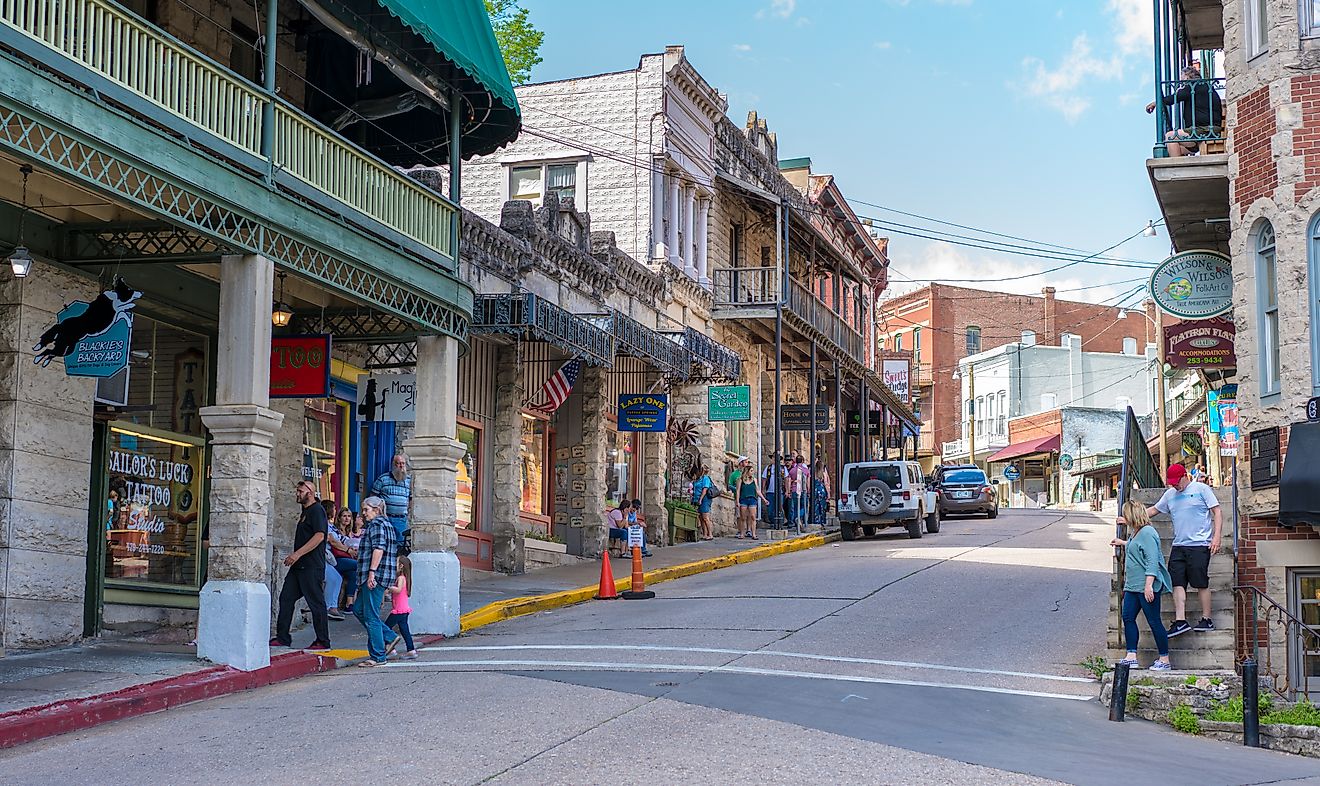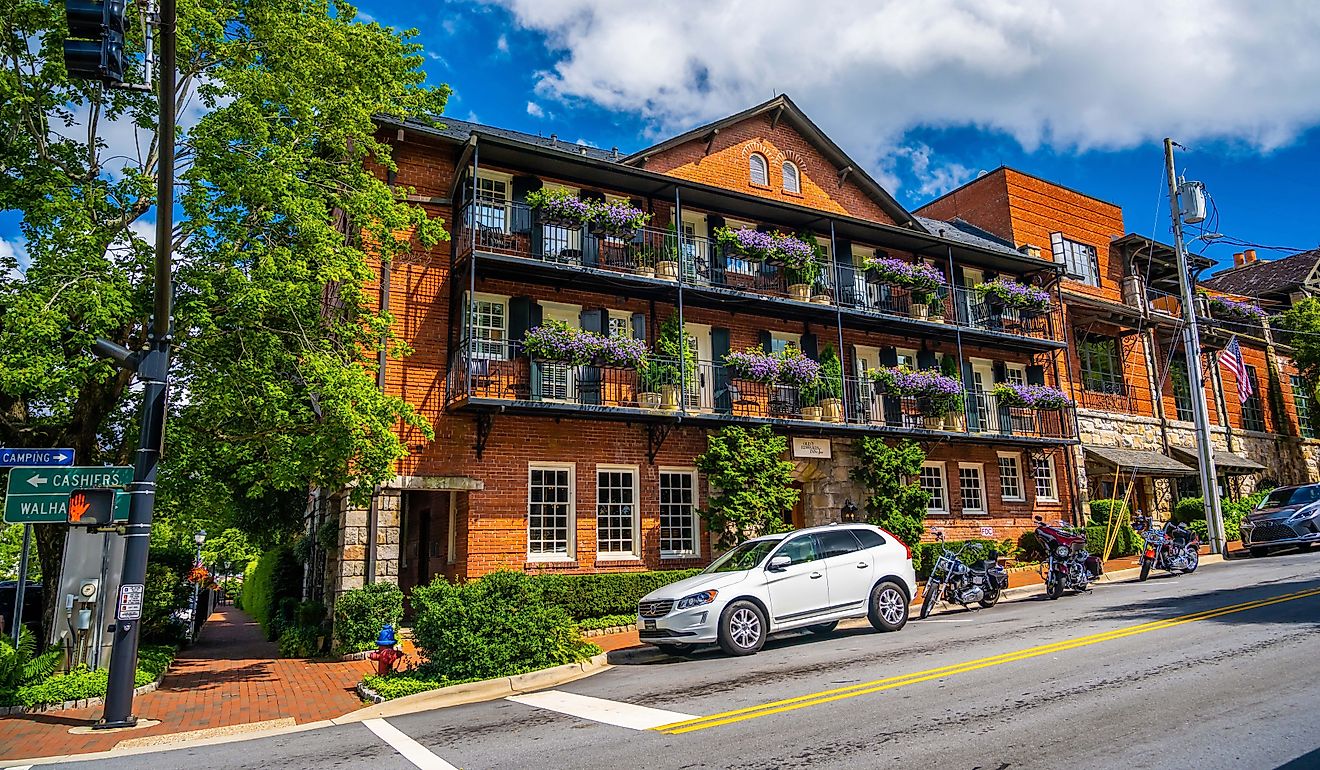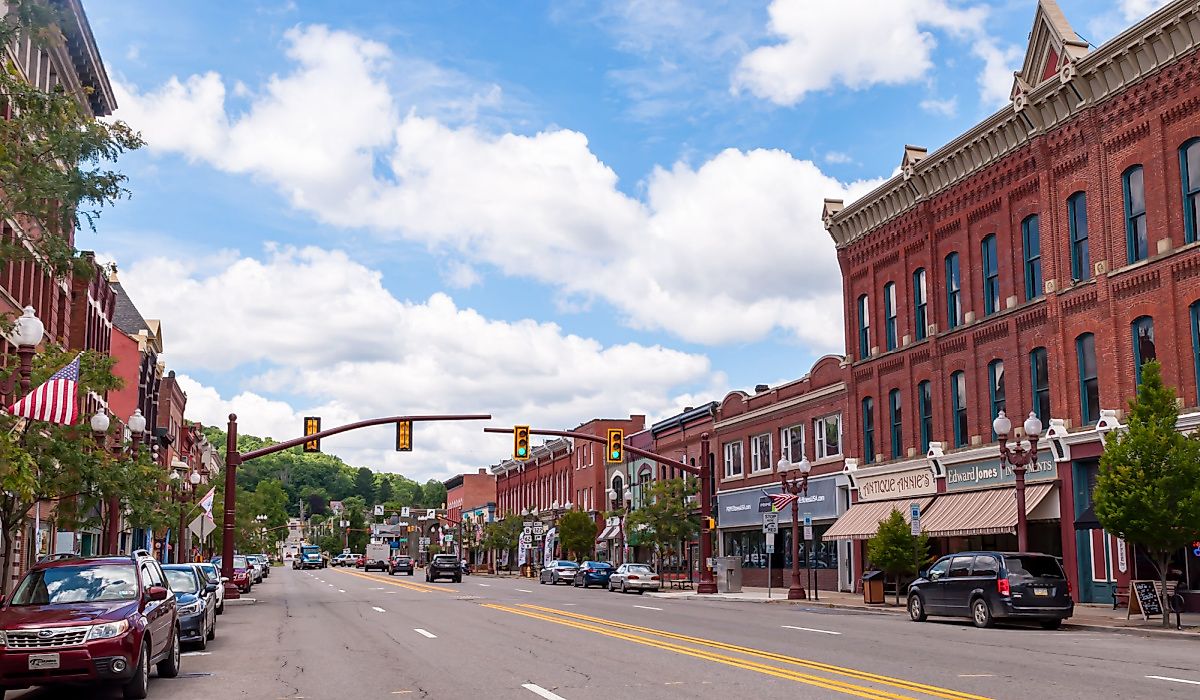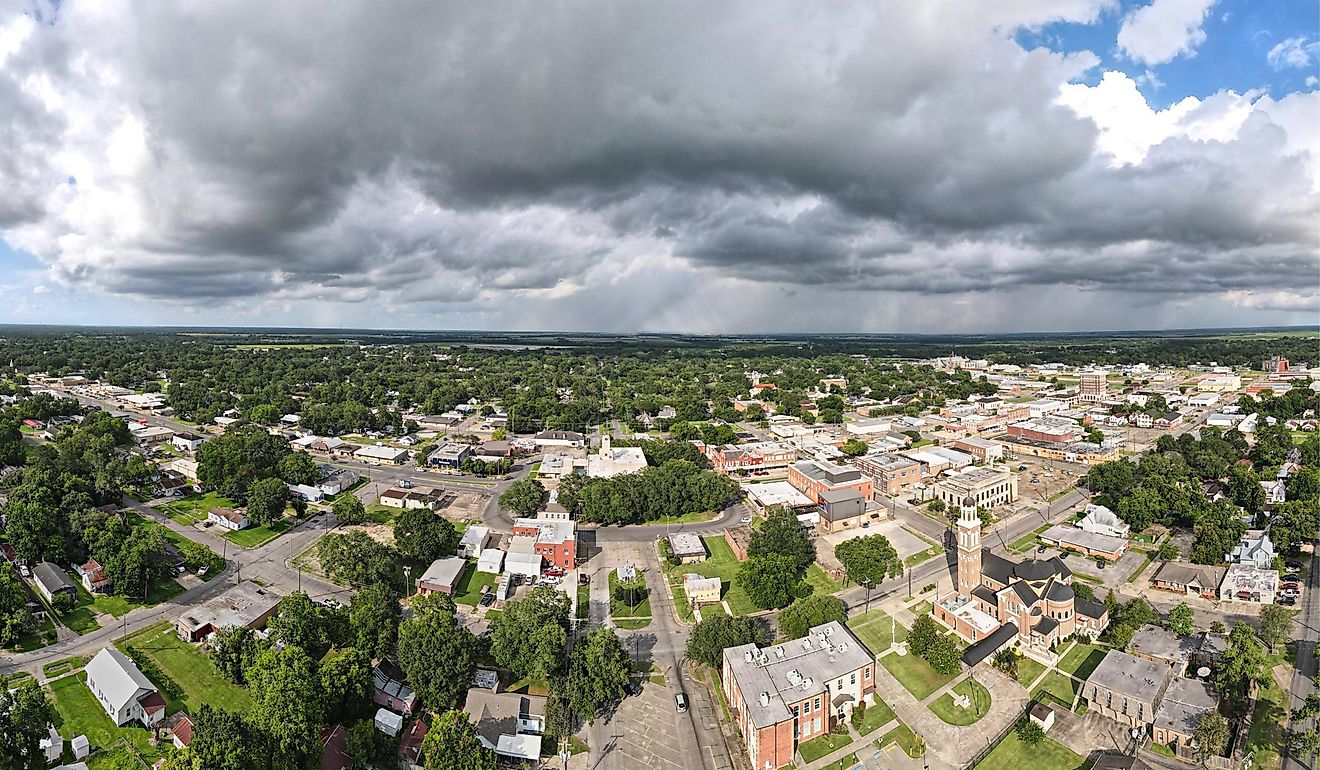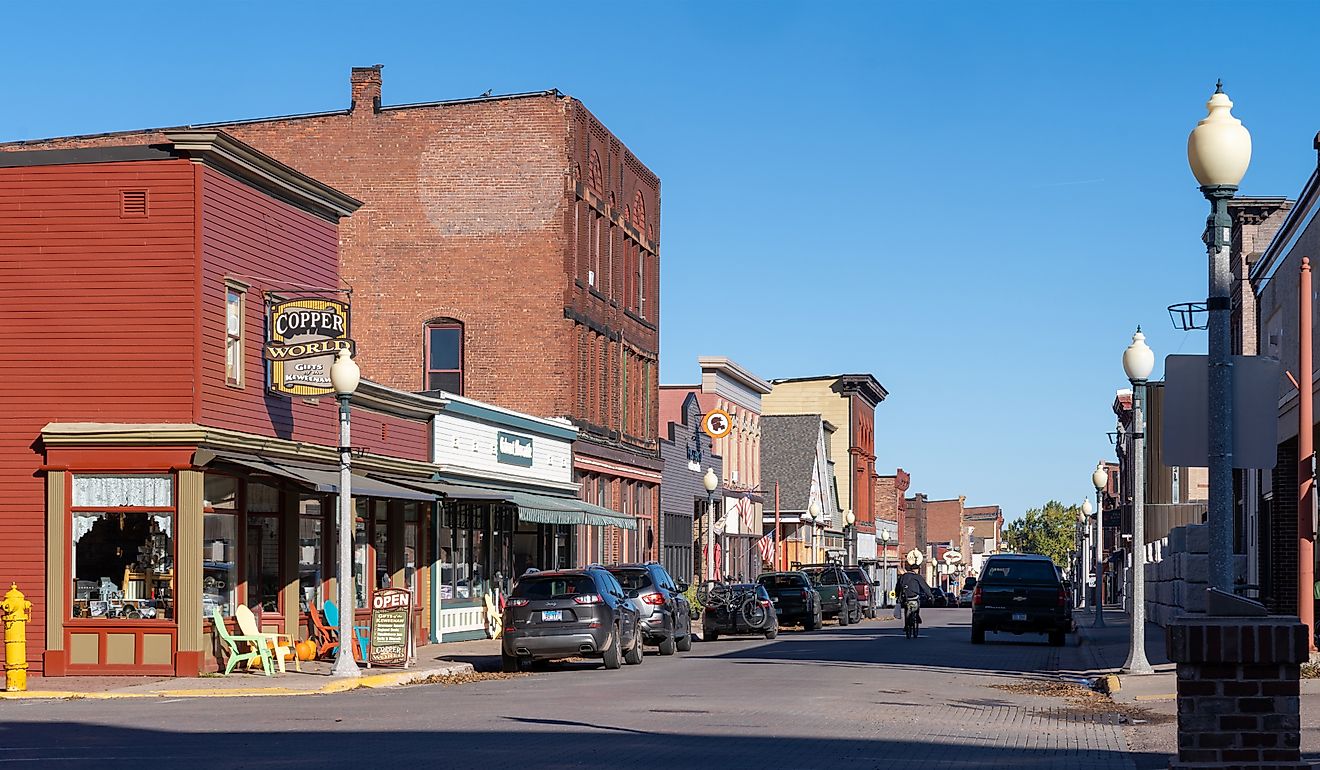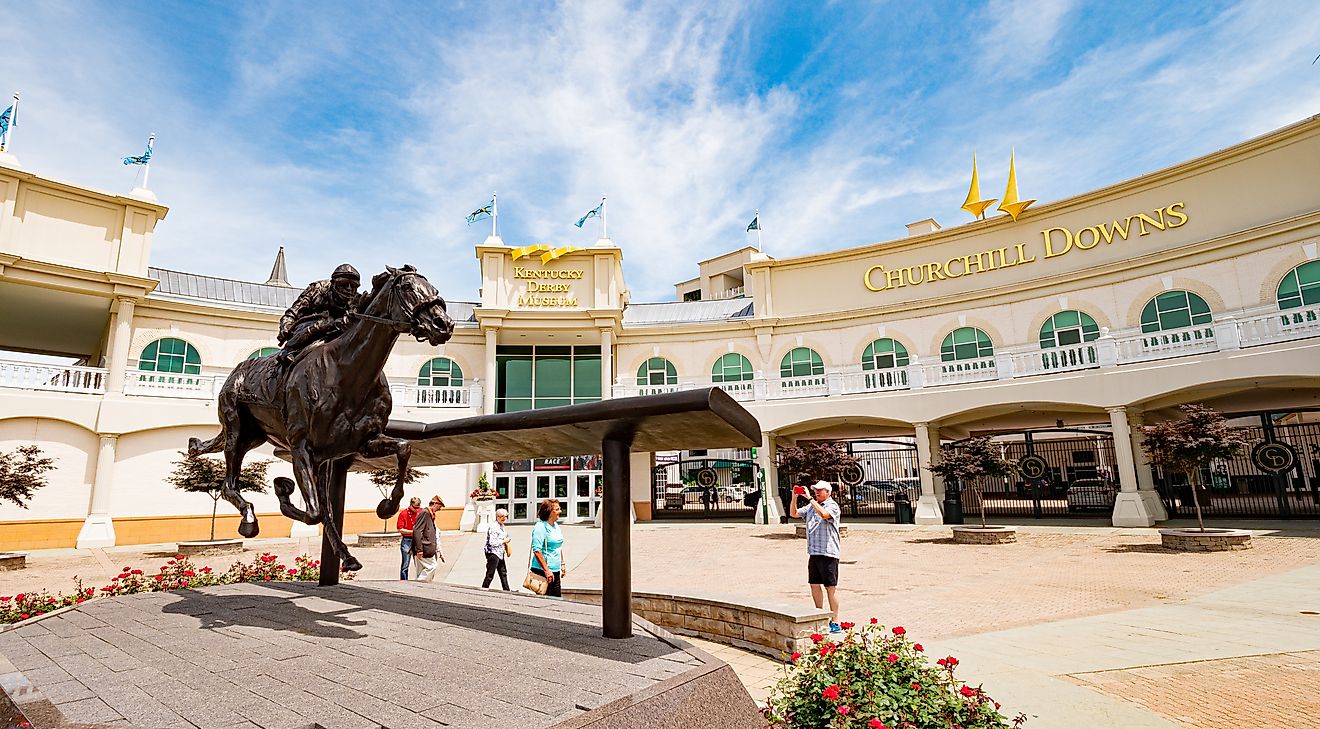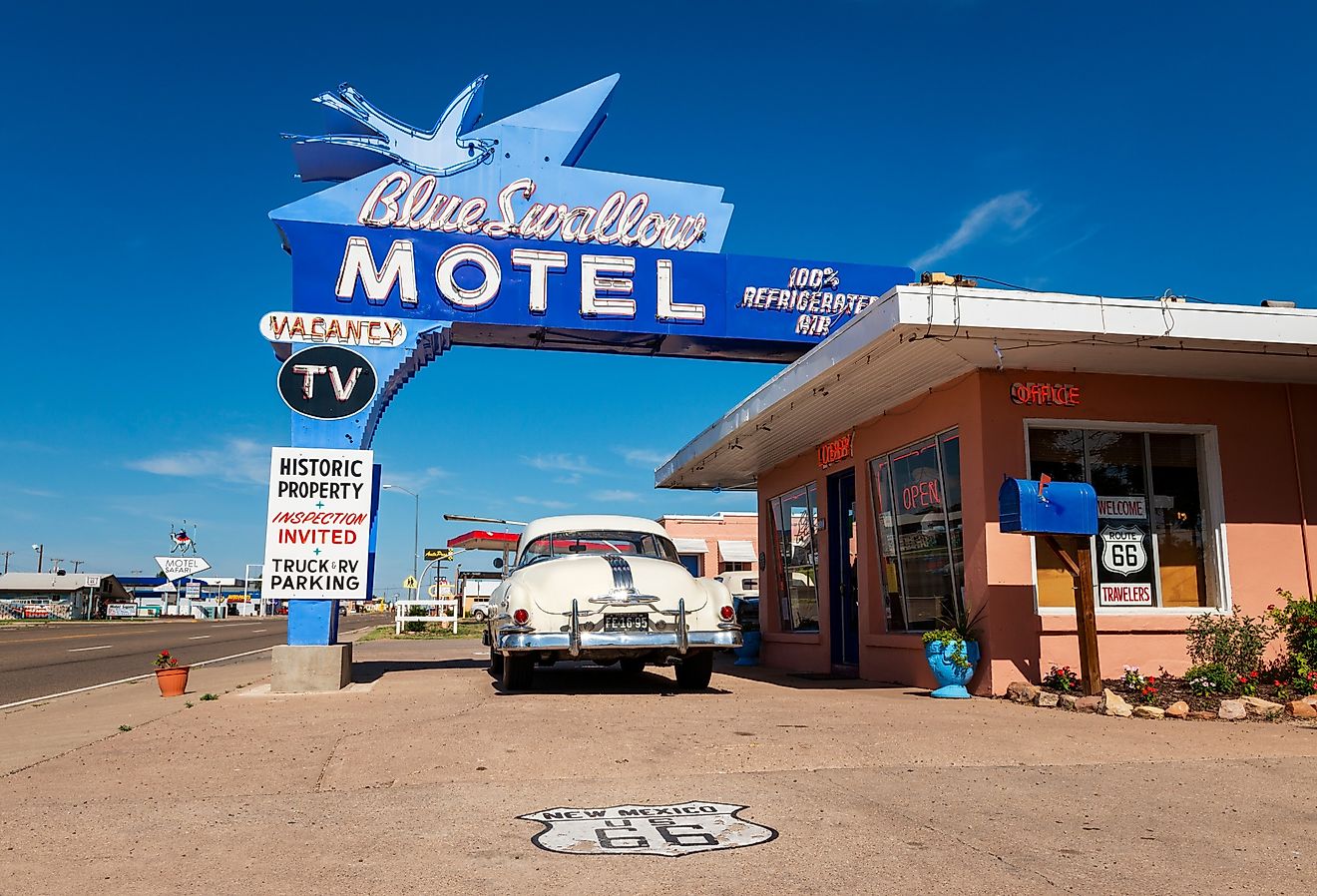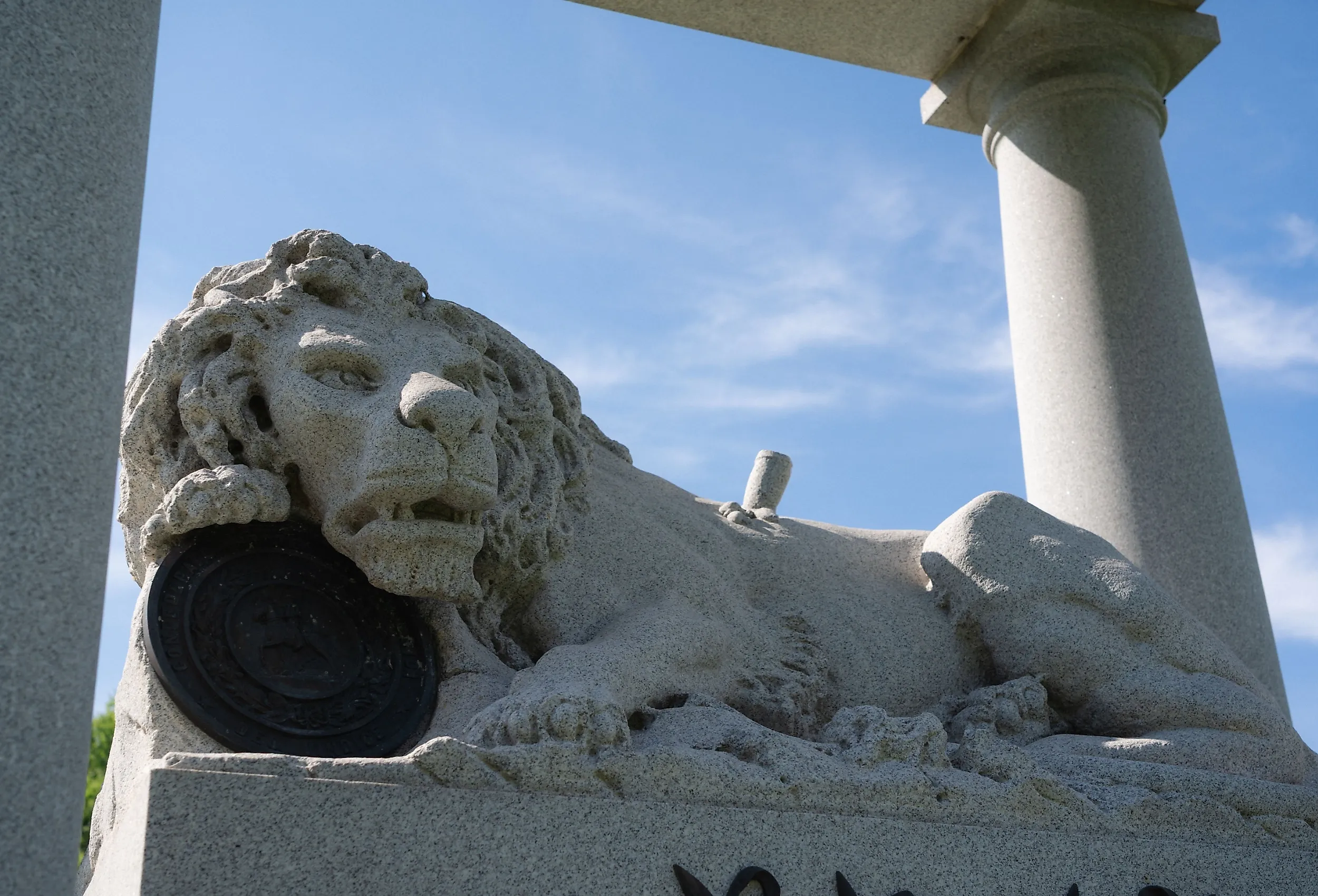
Top 8 Civil War Monuments In Missouri
Missouri served a unique role in the American Civil War. It was a slave state that attempted to remain neutral, but quickly became drawn into the wider conflict. Prior to the war breaking out, Missourians had been involved in the Bleeding Kansas incident in the 1850s, where proslavery Missourians traveled to the territory to try to force it to become a slave state and clashed with antislavery forces and figures such as John Brown.
When the Civil War began in 1861, the government of Missouri was split in two, with one loyal to the Confederacy and another to the Union. As a result, almost 110,000 Missourians fought for the Union and around 40,000 for the Confederacy.
Due to these divided loyalties, Missouri has a mixture of monuments, some dedicated to the Union, others to the Confederacy, and others that serve a dual role: honoring both sides. However, another monument in Missouri honors the people who had the most to gain and lose during the Civil War: freed slaves who fought for the Union. Read on to learn more about the top eight Civil War monuments in Missouri.
Franz Sigel Forest Park Statue
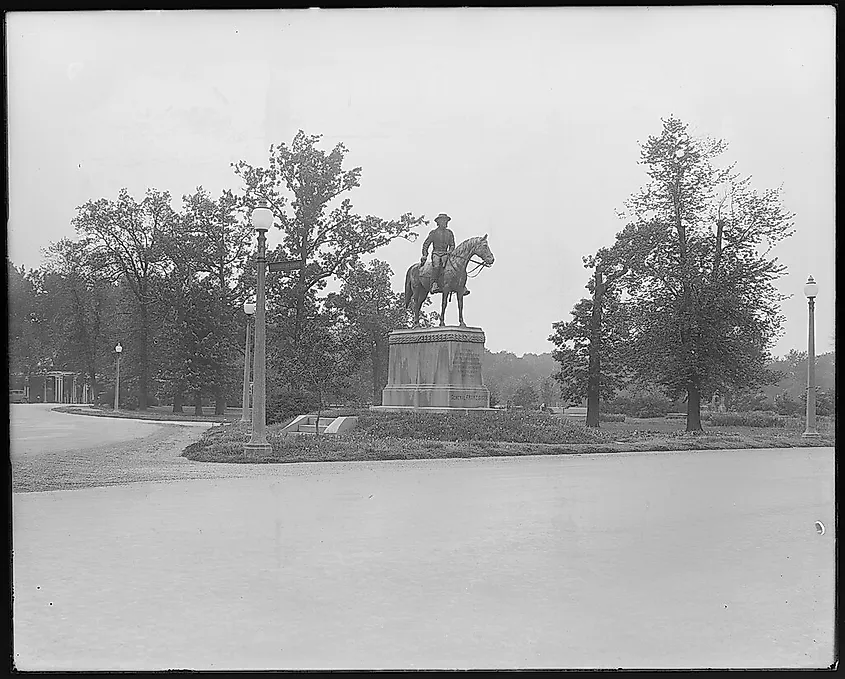
There are many monuments to famed Union and Confederate Generals, such as Robert E. Lee, Stonewall Jackson, and Ulysses S. Grant. Others honor lesser-known figures who were a part of immigrant communities, such as the Franz Sigel Forest Park Statue located in St. Louis, Missouri.
Franz Sigel was a German immigrant born in 1824 in Baden. He came to the U.S. as a young man after serving as a military leader in the Revolution of 1848, which led to his defeat and exile. He became a significant figure in the German immigrant community in St. Louis as the head of the German-American Institute in 1857.
When the Civil War began, Franz signed up for the Union side and would serve first as a colonel and later as a general leading German-American troops. He earned this promotion by defeating Confederate forces during the Battle of Pea Ridge in Arkansas in 1862. After his death in 1902, the Sigel Monument Association was founded to honor his legacy, and they successfully raised this statue of him atop a horse in 1906. At the base of the statue are the words, "To remind future generations of the heroism of German-American patriots in St. Louis and vicinity in the Civil War of 1861-1865."
Linn County Soldiers Monument
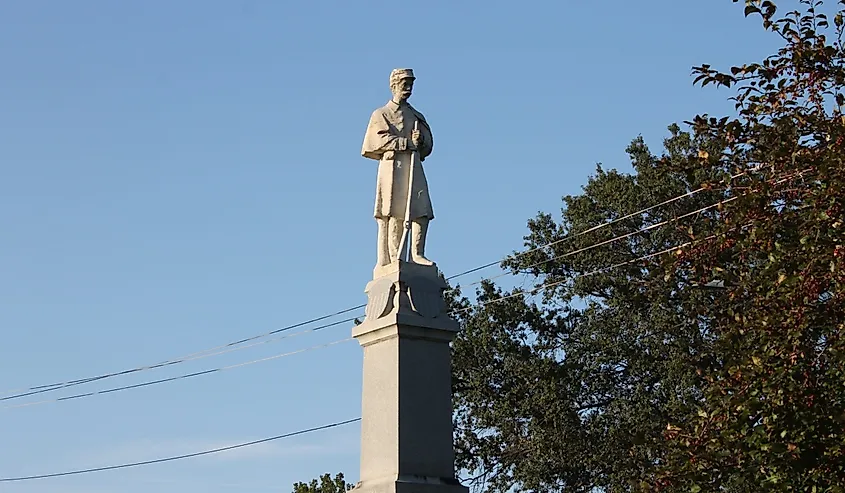
Many monuments were raised 50 years after the Civil War as the next generation grew up and aimed to preserve the legacy of their fathers and grandfathers who fought for the Union and the Confederacy. In some cases, a monument attempted to honor both sides.
One such example is the Soldier's Monument in Brookfield in larger Linn County. It presents a Union soldier standing at parade rest atop an obelisk. It was raised in 1912 at the insistence of the Women's Relief Corps of the Grand Army of the Republic to replace a monument to the unknown dead. The monument the soldier stands on is made of Barre granite, while the soldier is made of Italian marble. The total height of both is 22 feet.
Although it honors a Union soldier, the monument itself takes a slightly neutral stance, with only the words "1861-1865" and "Lest We Forget" written on it. A local newspaper called The Brookfield Gazette noted that the monument was raised to honor the "men in blue" but was "not forgetful of the gallant men in grey whom they met in the shock of battle."
American Civil War Memorial La Grange
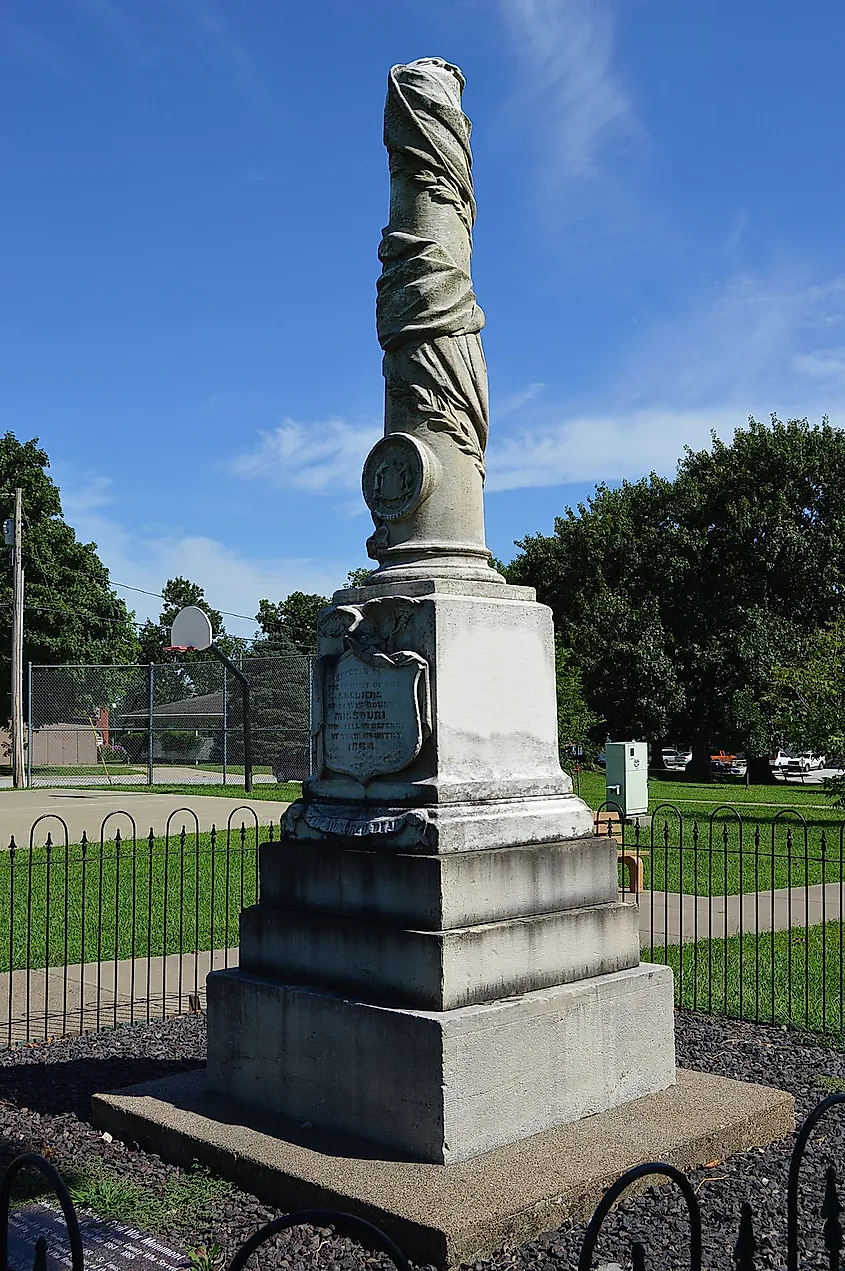
Located within the public square park in La Grange, Missouri, is this simple monument called the American Civil War Memorial, which was raised by citizens of larger Lewis County in 1869.
The monument features a wreath design along with a flag folded around its top. Intriguingly enough, this monument specifically is meant to honor Union soldiers from Lewis County, even though the area was a hotbed of pro-Confederate activity. This points to a key fact that Union and Confederate sympathies often divided communities. The monument was heavily faded but was restored in 2005 by the Sons of the Union Veterans of the Civil War.
Union Confederate Monument
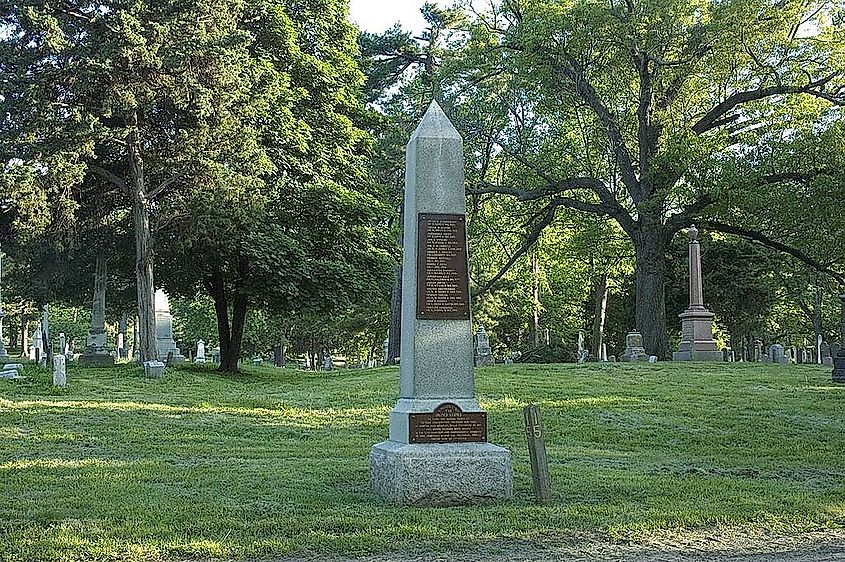
The intriguingly named Union Confederate Monument in Kansas City is called as such because it is a Confederate monument located within the larger Union Cemetery. In 1911, the U.S. Government 1911 put this small obelisk in place with the names of 15 Confederate POWs who were captured during the Battle of Westport.
This battle was particularly climactic for the state of Missouri, as it marked the last time Confederate troops tried to gain control over Missouri. During the battle, Major General Sterling Price of the Confederacy moved his Cavalry into nearby Kansas City, where he was attacked and beaten by Major General Samuel R. Curtis on October 23, 1864, in one of the largest battles west of the Mississippi. With this victory, the Union had complete control over the state.
This monument aimed to honor these prisoners of war, who died in hospitals in the area and were buried in Kansas City. One former Confederate soldier, Judge John B. Stone, said of the monument, "We are proud to honor a government broad enough and generous enough to erect a monument as this to their defeated enemies."
Statue of Sterling Price in Price Park
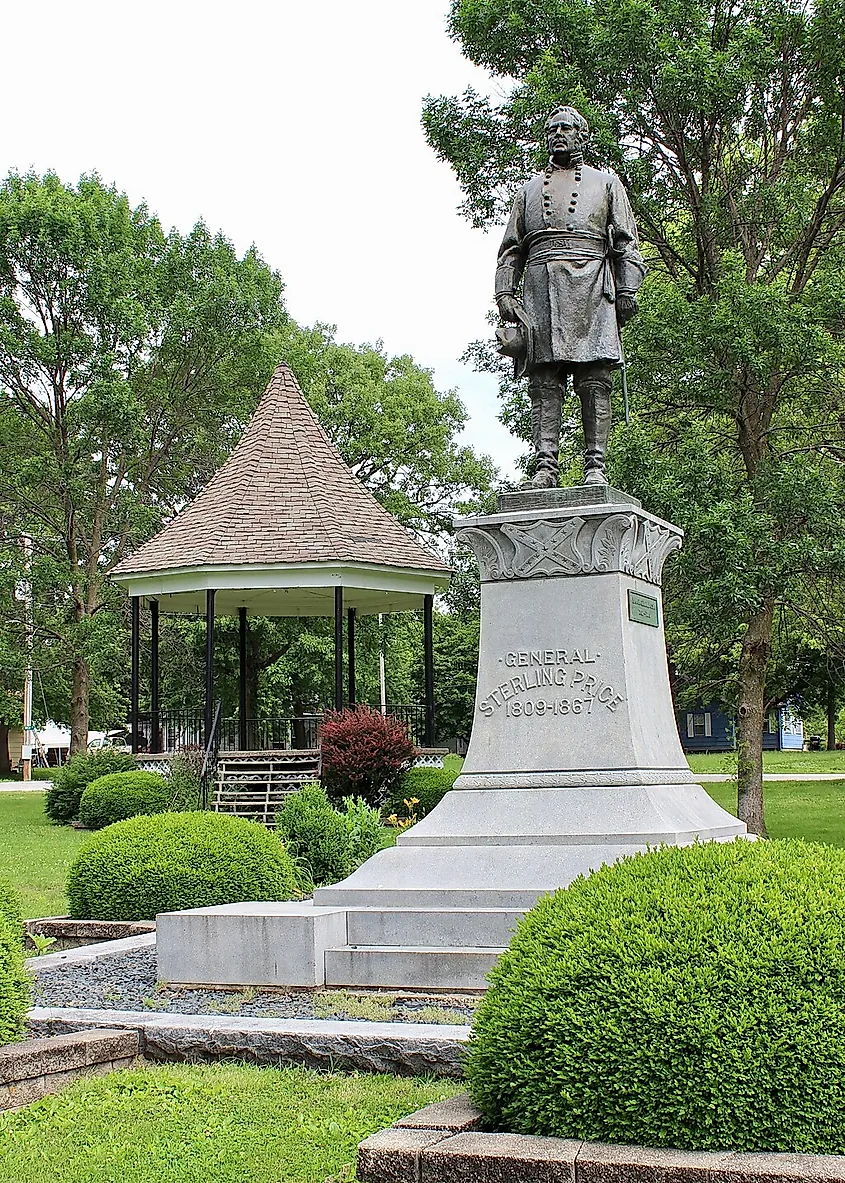
Sterling Price was a multifaceted individual, holding various roles. He served in the military during the Mexican-American War and the Missouri Mormon War. He was also the 11th Governor of Missouri from 1853 to 1857. However, he is most well known for his role as a General in the Confederate States Army, as mentioned in the above entry.
In 1911, the United Daughters of the Confederacy successfully pushed for a monument to be raised in his honor as a Confederate veteran. Allen George Newman was selected to create the sculpture, which was officially raised within Price Park in Keytesville, Missouri, in 1915.
The statue depicts Price standing with his hat in hand and a sword in its scabbard. It notes his title as General Sterling Price 1809-1867, with a Confederate coat of arms above his name. Other monuments bearing his name have attracted controversy, such as the Jefferson City marker, which was removed in 2020 along with another statue in Springfield. However, this monument has flown largely under the radar.
Confederate Memorial State Historic Site
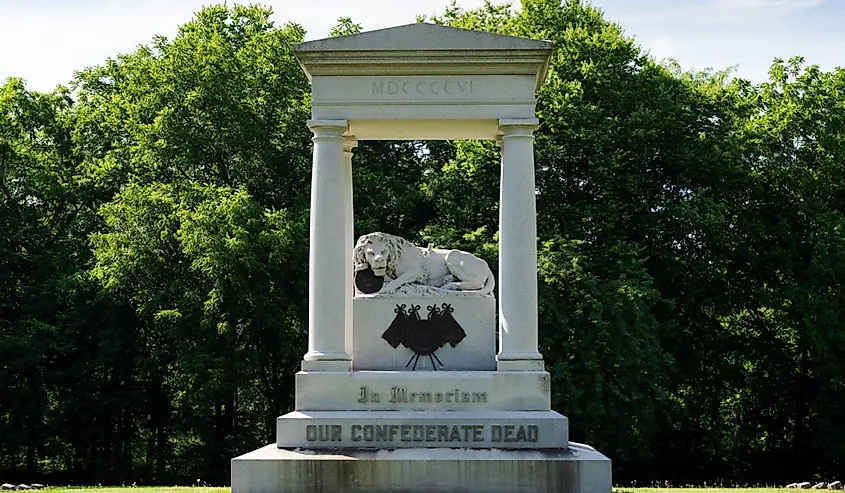
Located in Higginsville, Missouri, the Confederate Memorial State Historic Site is unique in this list for many reasons. It sits on the site of a retirement home for veterans of the Confederate States Army, which remained in operation from 1891 to 1950, when the last veteran died.
Afterwards, the site was turned into a state park, along with a cottage, chapel, and cemetery in the area. Within the cemetery is a 1906 monument raised by the United Daughters of the Confederacy. It features a lion sitting between four Greek-style pillars. Below the lion are the words "In Memorium Our Confederate Dead." The monument is modeled after the Lion of Lucerne in Switzerland, in honor of the Swiss Guard who were killed in 1792 during the French Revolution. The original memorial has a fleur-de-lis, but the Confederate version replaced it with the shield of the CSA.
The site itself is popular among residents, boasting 135 acres of lakes and walking trails. Unlike other Confederate sites, this one has not seen much controversy. Some journalists have stated this is because the area served primarily as a retirement home and was not tied to one particular battle or figure.
Battle of Island Mound State Historic Site
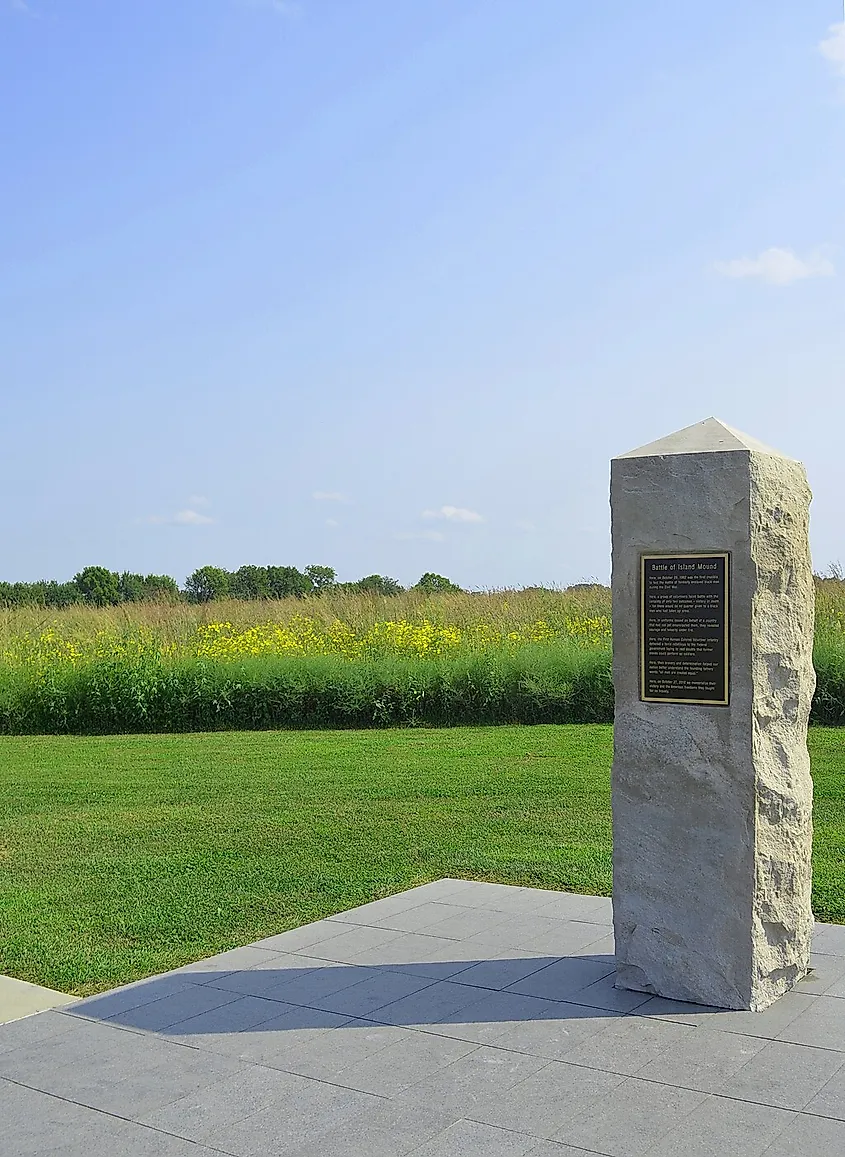
For African Americans serving during the Civil War, this conflict was a fight not just for their country but for all of their people still in bondage as slaves in the South. At first, the Union was hesitant to recruit freed black men or former slaves into the army and didn't officially approve them joining until July 17, 1862. However, one man, James Lane, an abolitionist senator from Kansas, began training a regiment of black soldiers before this order, which would be named the 1st Kansas Colored Volunteers, composed mainly of former slaves from Missouri and Arkansas.
This group would become the first Black soldiers to see combat during the Civil War at the Skirmish of Island Mound in Bates County, Missouri. During this skirmish, 250 men held off 300 Confederate troops and won a small but deeply symbolic victory.
Today, a small monument to these men stands at the Battle of Island Mound State Historic Site, which was erected in 2012.
The monument has a plaque which reads that a "group of volunteers faced battle with the certainty of only two outcomes -- victory or death -- for there would be no quarter given to a black man who had taken up arms. Here, in uniforms issued on behalf of a country that had not yet emancipated them, they revealed courage and tenacity under fire."
The Confederate Soldier Monument at Forest Hill & Calvary Cemetery
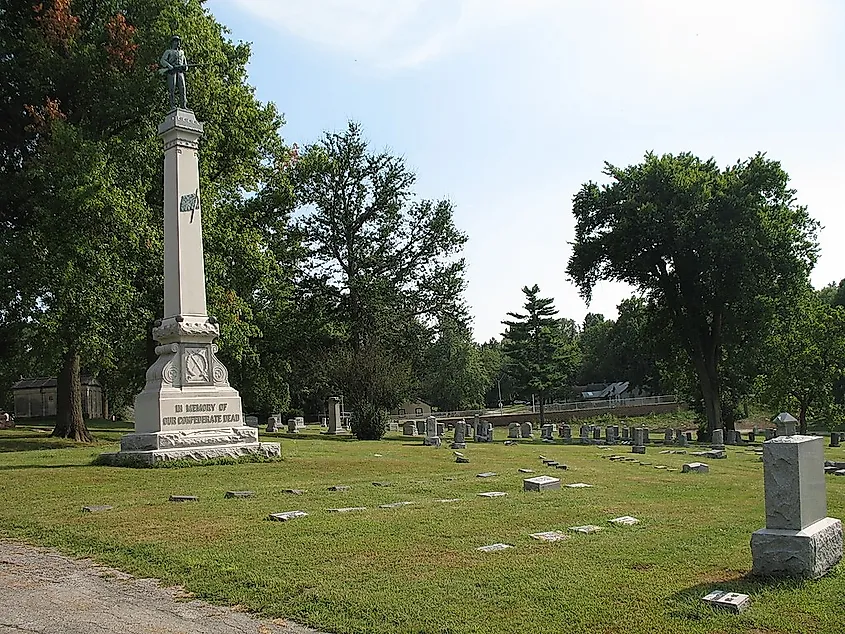
Sterling Price's raid through Missouri left a wake of destruction. Lasting from August to December 1864, Price ultimately lost most of his forces. Most significantly, he lost 1,500 of his force of 8,500 men during the Battle of Westport in Kansas City.
After the war, residents in Kansas City wanted to give these dead Confederate soldiers a more proper burial, and so more than 70 were moved to Forest Hill & Calvary Cemetery.
Later on in 1902, the United Daughters of the Confederacy raised funds to construct a monument within the cemetery. The white granite monument features a Confederate soldier standing atop a pillar wearing a simple hat and knapsack, carrying a rifle in both of his hands. It is dedicated "to the brave southern soldiers who fell in the Battle of Westport, October 23, 1864."
It is worth noting that the United Daughters of the Confederacy had deep ties to the Ku Klux Klan. For example, Midred Lewis Rutherford, who was historian general of the organization from 1911 to 1916, promoted the Ku Klux Klan in both speeches and "educational programs" for children. The organization also heavily endorsed the Lost Cause myth, which argued that the Civil War was fought to protect states' rights rather than the real cause of the Civil War: to defend the institution of slavery.
Missouri is a prime example of how the Civil War split families and communities apart, especially in the border regions between the Union and the Confederacy. With these split loyalties, it's natural that Missouri would have a mixture of Confederate and Union monuments, although these monuments tell two very different stories.
The Confederate monuments tend to be steeped in Lost Cause mythology, treating the cause as a righteous one for states' rights. Union monuments primarily honor the dead and their role in preserving the country. However, some like the Battle of Island Mount State Historic Site show the truth of the war: that it was a struggle over slavery and the fate of millions of enslaved African Americans within both the Confederacy at large and the border state of Missouri. All of these monuments are worth visiting to see the complexities of the war and the many different ways it is remembered, depending on which side is remembering it.
